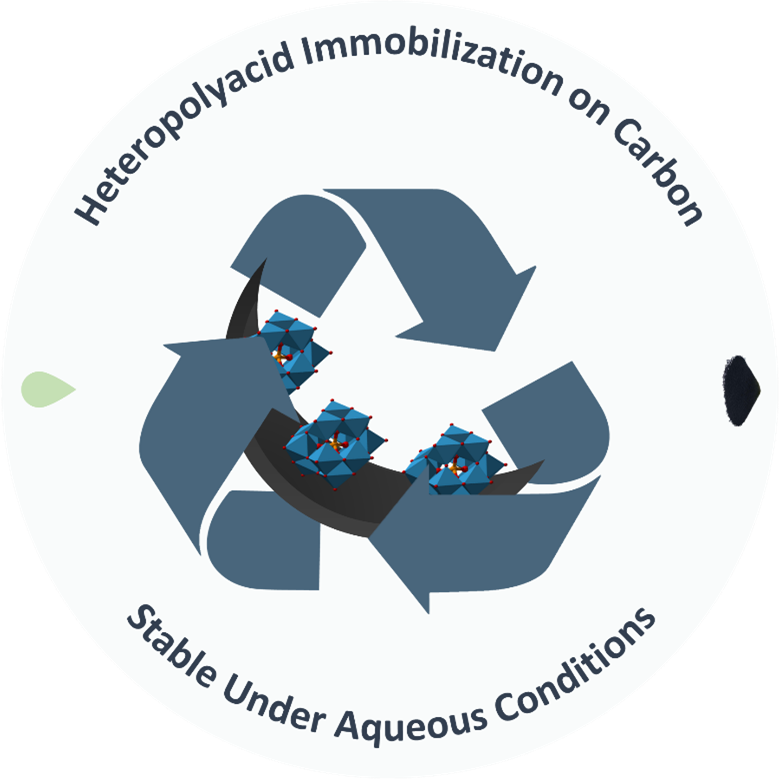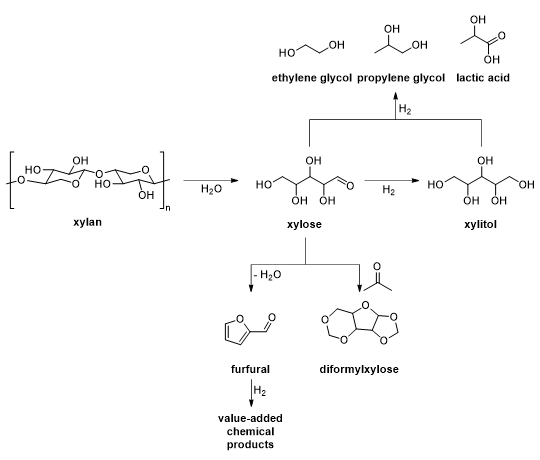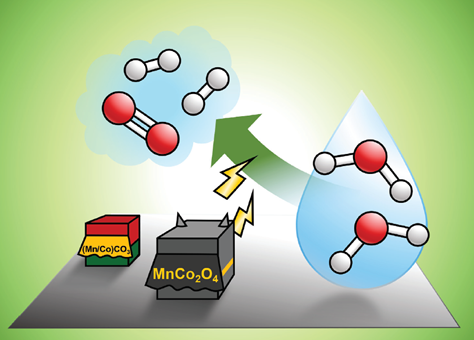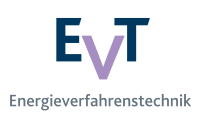Research
In the research group, we are working on the development of catalysts and processes for the sustainable development of the chemical industry and the energy sector. We are taking a look into the conversion of biogenic raw materials as a substitute for crude oil and natural gas, the chemical recycling of plastics, dynamic process conditions and the direct use of renewable energies for chemical conversions.
Development of solid acid catalysts
Acid catalysts are particularly important for the conversion of biogenic raw feedstocks into value-added products. Solid acids such as zeolites and ion exchange resins can be used to ensure that the catalysts can be easily recycled in the process. However, homogeneous acidic catalysts, such as heteropolyacids (HPAs), show higher activity and acid strength and can be molecularly adapted to the needs of the considered reaction. For this reason, we are investigating the immobilization of HPAs on suitable support materials[1-2] in order to maintain the increased activity and at the same time enable recycling of the catalyst. The catalysts produced are characterized, tested in various bio-based reactions and studied for their long-term stability. In this way, we understand the binding mechanisms of the HPAs to the carrier and learn to adapt the catalysts in such a way that a balance between activity and stability is maintained and an optimal result in catalysis is achieved. In the future, the carrier materials will not only be investigated in powder form, but also as 3D-printed, nanostructured catalyst beds and reactors.

Conversion of lignocellulose
Non-edible second-generation biomass can be used in a sustainable chemical industry to produce plastics, fuels, solvents, pharmaceuticals or cosmetics, for example, and thus replace crude oil as a carbon source. Chemically speaking, second-generation biomass consists largely of lignocellulose, which in turn is made up of the natural polymers hemicellulose, cellulose and lignin. Hemicellulose, which is composed of various sugars, is particularly interesting for chemical value creation, as it is easy to extract but has barely been used on an industrial scale to date. In the research group, we are looking at various reaction pathways for value creation from hemicellulose and developing these further into catalytic processes. Particularly noteworthy are the conversion of the xylose polymer xylan to the sugar xylose or further to the sugar alcohol xylitol, the production of diformylxylose from xylose, the conversion of xylose or xylitol to glycols[3-5] or lactic acid, the dehydration of xylose to furfural and the further conversion of furfural to value-added chemical products by means of selective hydrogenation.

Process development for the chemical recycling of waste plastic
In addition to biomass, waste plastic can also be used as a feedstock for the production of chemicals, energy and energy carriers. In order to enable the holistic use of plastic waste, we are working on the production of hydrogen, synthesis gas and methanol from mixed waste streams. Our process development is based on the catalytic aqueous phase reforming (APR) process, which was developed for value creation from biomass. We are aiming to transferring the process to the new substrate stream. The optimization of the process and the catalyst as well as the development and implementation of a continuous reactor are in the center of the project.
Dynamic process conditions and the use of renewable energies for chemical conversions
The transition of the energy sector from fossil fuels to renewables brings with it a fluctuation in the availability of electricity, which can be compensated for by the efficient storage of energy. In this context, electrochemical water splitting and water production in fuel cells will be of particular importance in future energy scenarios. In order to make water splitting more efficient, we are developing anode materials that facilitate oxygen evolution[6-7]. On the other hand, we are also looking at alternative reactions at the anode that take place at a lower voltage and at the same time produce value-added chemical products. One example is the production of hydrogen peroxide. In addition to the development of electrode materials, we are also looking at dynamic process conditions, which are a particular challenge for the long-term stability of the electrodes. In this way, we are contributing to the development of viable concepts for the transition towards a defossilized energy supply.
 [8]
[8]
Literature
1. L. Hombach, N. Hausen, A. Garzón Manjón, C. Scheu, H. Kraffczyk, M. Rose, J. Albert, A. K. Beine*:
"Carbon Supported Polyoxometalates as Recyclable Solid Acid Catalysts in Aqueous Reactions"
Applied Catalysis A: General, 2023, 666, 119392.
2. L. Hombach, N. Simitsis, J. T. Vossen, A. J. Vorholt, A. K. Beine*:
"Solidified and Immobilized Heteropolyacids for the Valorization of Lignocellulose”"
ChemCatChem 2022, 14, e202101838.
3. A. K. Beine*, Y. Albano, K. Gupta, R. Palkovits:
"Biobased Glycols – Towards the Use of Solid Bases in the Hydrogenolysis of Sorbitol"
Chemistry Select 2024, 9, e202302659.
4. A. K. Beine, J. Ludovicy, J. Chai, J. P. Hofmann, C. Glotzbach, P. J. C. Hausoul, R. Palkovits:
"Ru on N-doped carbon for the selective hydrogenolysis of sugars and sugar alcohols"
ChemCatChem 2022, 14, e202101908.
5. A. K. Beine, C. Glotzbach, P. J. C. Hausoul, R. Palkovits, S. Schirrmeister:
"Chemical conversion of sugars or sugar alcohols to glycols"
DE 10 2017 204 322 A1 (Internationalisierung: WO 2018 166566 A1, CN 000110431127 A, EP 000003596034 A1).
6. F. Zeng, L. Liao, A. K. Beine, R. Palkovits:
"Stability and deactivation of OER electrocatalysts: A Review"
Journal of Energy Chemistry 2022, 69, 301-329.
7. C. Broicher, M. Frisch, S. Dresp, N. M. Kubo, F. Girgsdies, J. Artz, S. Palkovits, A. K. Beine*, P. Strasser*, R. Palkovits*:
"Particle size-controlled synthesis of high-performance MnCo-based materials for alkaline OER at fluctuating potentials"
Catalysis Science and Technology 2021, 11, 7278 - 7286.
8. C. Broicher, M. Frisch, S. Dresp, N. M. Kubo, F. Girgsdies, J. Artz, S. Palkovits, A. K. Beine*, P. Strasser*, R. Palkovits*:
"Inside Back Cover"
Catalysis Science and Technology 2021, 11, 7493 7493.

